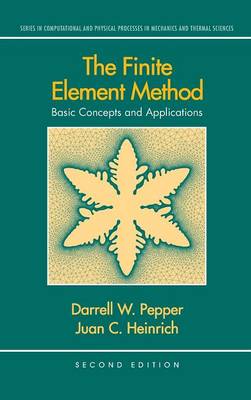Computational and Physical Processes in Mechanics and Thermal Sciences
1 total work
This much-anticipated second edition introduces the fundamentals of the finite element method featuring clear-cut examples and an applications-oriented approach. Using the transport equation for heat transfer as the foundation for the governing equations, this new edition demonstrates the versatility of the method for a wide range of applications, including structural analysis and fluid flow.
Much attention is given to the development of the discrete set of algebraic equations, beginning with simple one-dimensional problems that can be solved by inspection, continuing to two- and three-dimensional elements, and ending with three chapters describing applications. The increased number of example problems per chapter helps build an understanding of the method to define and organize required initial and boundary condition data for specific problems. In addition to exercises that can be worked out manually, this new edition refers to user-friendly computer codes for solving one-, two-, and three-dimensional problems. Among the first FEM textbooks to include finite element software, the book contains a website with access to an even more comprehensive list of finite element software written in FEMLAB, MAPLE, MathCad, MATLAB, FORTRAN, C++, and JAVA - the most popular programming languages.
This textbook is valuable for senior level undergraduates in mechanical, aeronautical, electrical, chemical, and civil engineering. Useful for short courses and home-study learning, the book can also serve as an introduction for first-year graduate students new to finite element coursework and as a refresher for industry professionals. The book is a perfect lead-in to Intermediate Finite Element Method: Fluid Flow and Heat and Transfer Applications (Taylor & Francis, 1999, Hb 1560323094).
Much attention is given to the development of the discrete set of algebraic equations, beginning with simple one-dimensional problems that can be solved by inspection, continuing to two- and three-dimensional elements, and ending with three chapters describing applications. The increased number of example problems per chapter helps build an understanding of the method to define and organize required initial and boundary condition data for specific problems. In addition to exercises that can be worked out manually, this new edition refers to user-friendly computer codes for solving one-, two-, and three-dimensional problems. Among the first FEM textbooks to include finite element software, the book contains a website with access to an even more comprehensive list of finite element software written in FEMLAB, MAPLE, MathCad, MATLAB, FORTRAN, C++, and JAVA - the most popular programming languages.
This textbook is valuable for senior level undergraduates in mechanical, aeronautical, electrical, chemical, and civil engineering. Useful for short courses and home-study learning, the book can also serve as an introduction for first-year graduate students new to finite element coursework and as a refresher for industry professionals. The book is a perfect lead-in to Intermediate Finite Element Method: Fluid Flow and Heat and Transfer Applications (Taylor & Francis, 1999, Hb 1560323094).
